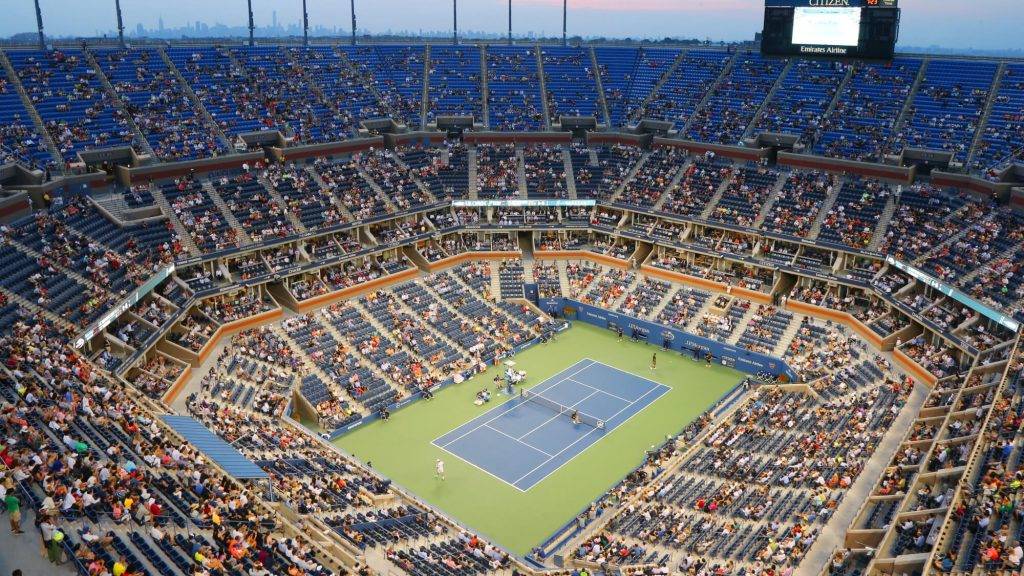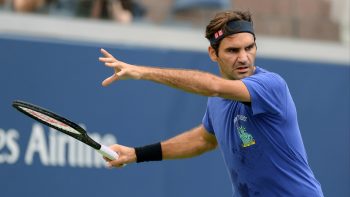From its humble beginnings in 1881 to the global spectacle it is today, the US Open has experienced a remarkable transformation. The tournament has evolved from its grass court origins, moving to clay surfaces and ultimately settling on hard courts. Throughout its history, the US Open has embraced progressive changes, such as ensuring equal prize money for both men and women in 1973 and constructing the iconic Arthur Ashe Stadium in 1997. The increasing interest in odds for the US Open has also played a significant role in enhancing the tournament’s allure for sports bettors.
Acing the Spotlight: Celebrating the US Open’s Tennis Legends and Unforgettable Battles
The US Open has been home to numerous tennis greats who have captivated audiences and contributed to the tournament’s rich history. Immortal names like Billie Jean King, Arthur Ashe, Pete Sampras, Serena Williams, and Roger Federer have left lasting legacies on the US Open stage. These legends have participated in some of the most thrilling and dramatic matches, such as the legendary 2001 quarterfinal between Pete Sampras and Andre Agassi, and the nail-biting 2012 final where Andy Murray bested Novak Djokovic
US Open Records and Achievements

| Record | Player(s) | Year/Detail(s) |
| Most Men’s Singles Titles | Pete Sampras, Jimmy Connors, Roger Federer | 5 |
| Most Women’s Singles Titles | Serena Williams, Chris Evert | 6 |
| Youngest Men’s Singles Champion | Pete Sampras | 1990 |
| Youngest Women’s Singles Champion | Tracy Austin | 1979 |
| Oldest Men’s Singles Champion | Ken Rosewall | 1970 |
| Oldest Women’s Singles Champion | Molla Mallory | 1926 |
| Longest Men’s Singles Match | Stefan Edberg vs. Michael Chang | 5 hours, 26 minutes (1992) |
| Longest Women’s Singles Match | Vicki Nelson-Dunbar vs. Jean Hepner | 6 hours, 31 minutes (1984) |
Love for the Game: The US Open’s Influence on Tennis Popularity
The US Open has been instrumental in expanding tennis’s fan base and viewership. As the last Grand Slam of the year, the tournament attracts an international audience, with millions tuning in to watch the sport’s greatest players compete. The prestige associated with the event, combined with its high-stakes competition, has contributed to tennis’s growth as a global sport.
Factors that have contributed to the US Open’s popularity
- Celebrity attendance
- Extensive media coverage
- Lucrative sponsorships
- Engaging fan activities
Breaking New Ground: US Open’s Technological and Infrastructural Advancements
The US Open has consistently introduced cutting-edge technology and infrastructure upgrades to improve the experience for players and fans. The introduction of electronic line-calling, the Hawk-Eye system, and the construction of new stadiums, such as the Arthur Ashe Stadium and Louis Armstrong Stadium, have transformed the tournament into a modern and fan-friendly event.
Key Innovations at the US Open
| Innovation | Year Introduced | Impact |
| Electronic Line-Calling | 2006 | Improved accuracy and reduced human error in officiating |
| Hawk-Eye System | 2006 | Enhanced player challenges and decision-making accuracy |
| Arthur Ashe Stadium | 1997 | Increased seating capacity and provided a state-of-the-art venue |
| Retractable Roofs | 2016 | Allowed for uninterrupted play during inclement weather |
| Video Review | 2018 | Improved officiating and reduced disputes over close calls |
Scoring Success: The US Open’s Role in Fostering Tennis Growth
The US Open has significantly contributed to the development of tennis by inspiring young talents and creating opportunities for players to compete on the world stage. As one of the most esteemed events in the sport, the tournament serves as a beacon for aspiring players, motivating them to dedicate themselves to a career in tennis.
US Open’s Grassroots Initiatives
- USTA Player Development Program
- USTA Foundation’s support for National Junior Tennis and Learning (NJTL)
- US Open Junior Championships
- US Open Qualifying Tournament
- US Open Wheelchair Championships
Placing Your Bets: How Wagering on the US Open Enhances Its Appeal
The growing interest in betting on the US Open adds another dimension to the tournament’s popularity. The unpredictable nature of the competition and the diverse field of players make odds for the US Open particularly enticing for bettors. This facet of the event has not only drawn in seasoned tennis fans but also captivated new enthusiasts, contributing to the tournament’s overall appeal.
Charging the Baseline: Envisioning the US Open’s Future and Tennis Progression
As the sport of tennis continues to evolve, so too will the US Open. The tournament must adapt to emerging trends and seize new opportunities to maintain its prestigious status as a premier event in the tennis world.
Key Areas of Focus for the US Open’s Future
- Environmental sustainability initiatives
- Virtual and augmented reality experiences for fans
- Expanding global reach through partnerships and broadcasting agreements
- Continuing to invest in player development programs
The Final Set: Commemorating the US Open’s Sustained Contributions to Tennis
The US Open’s prestigious status and unwavering commitment to progress have made a lasting impact on the sport of tennis. From memorable moments to steadfast support for player development, the tournament has played an instrumental role in shaping the tennis world. As we applaud the US Open’s ongoing influence, it’s evident that this esteemed event will continue to inspire and drive the sport for years.
Key Milestones in the US Open’s History
| Milestone | Year | Significance |
| The inception of the US Open | 1881 | Established the tournament as a premier tennis event |
| Equal Prize Money for Men and Women | 1973 | Promoted gender equality in tennis |
| Introduction of Electronic Line-Calling | 2006 | Improved officiating accuracy and reduced disputes |
| The construction of Arthur Ashe Stadium | 1997 | Provided a state-of-the-art venue for the tournament |
| Expansion of Wheelchair Tennis Championships | 2005 | Increased inclusivity and visibility of wheelchair tennis |
With its rich history and continued dedication to innovation, the US Open will undoubtedly remain an essential force in tennis for years to come.

















